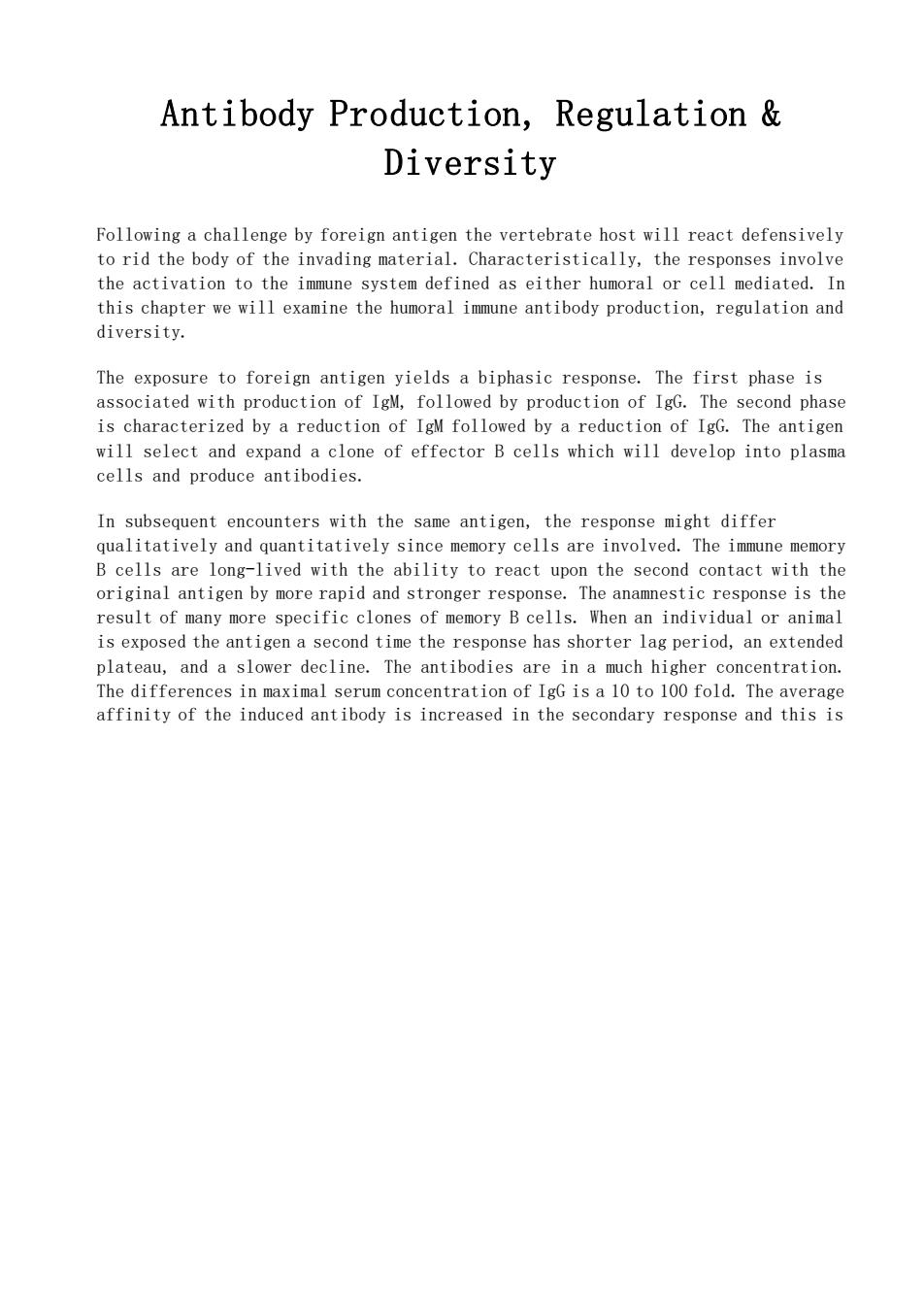正在加载图片...

Antibody Production,Regulation Diversity Following a challenge by foreign antigen the vertebrate host will react defensively In this chapter we will examine the humoral immune antibody production,regulation and diversity. The exposure to foreign antigen yields a biphasic response.The first phase is associated with production of IgM,followed by production of IgG.The second phase is characterized by a reduction by a reduction ofIg.The antigen will select and expand a clone of effector B cells which will develop into plasma cells and produce antibodies. In subsequent encounters with the same antigen,the response might differ qualitatively and quantitatively since memory cells are involved.The immune memory Bcells are long-lived with the ability to react upon the second contact with the original antigen byore rapid and stronger respons e anamnes + nse is the result of many more specific clones of memory B cells.When an individual or animal is exposed the antigen a second time the response has shorter lag period,an extended plateau,and a slower decline.The antibodies are in a much higher concentration.Antibody Production, Regulation & Diversity Following a challenge by foreign antigen the vertebrate host will react defensively to rid the body of the invading material. Characteristically, the responses involve the activation to the immune system defined as either humoral or cell mediated. In this chapter we will examine the humoral immune antibody production, regulation and diversity. The exposure to foreign antigen yields a biphasic response. The first phase is associated with production of IgM, followed by production of IgG. The second phase is characterized by a reduction of IgM followed by a reduction of IgG. The antigen will select and expand a clone of effector B cells which will develop into plasma cells and produce antibodies. In subsequent encounters with the same antigen, the response might differ qualitatively and quantitatively since memory cells are involved. The immune memory B cells are long-lived with the ability to react upon the second contact with the original antigen by more rapid and stronger response. The anamnestic response is the result of many more specific clones of memory B cells. When an individual or animal is exposed the antigen a second time the response has shorter lag period, an extended plateau, and a slower decline. The antibodies are in a much higher concentration. The differences in maximal serum concentration of IgG is a 10 to 100 fold. The average affinity of the induced antibody is increased in the secondary response and this is